Port Final Project: Present Day Auschwitz
by Carly Port
- December 13
- in
The magic of virtual reality lies within its sense of presence. VR has the ability to take a user to a certain place, in a certain time, and experience what its like to physically be there, rather than watch from an outside perspective. Users aren't just watching the story unfold, users are part of the story. This immersion causes users to feel emotions much more deeply than they would if the same content was moved to a different platform. Due to this effect, the storyteller must consistently keep users in mind when designing a VR experience, as every decision made could make a substantial impact upon the user and leave lasting effects.
My story, Present Day Auschwitz, stemmed from a real life experience I had in the summer of 2012. With a group of 50 or so Jewish teenagers, many new friends, I spent 4 hours on a 92 degree, humid, June afternoon touring Auschwitz Concentration Camp, or that which was still left of it.
Over the course of this experience I felt many, many emotions.
Anger. Anger in the direction of the mastermind behind Auschwitz 1, a deceptive portion of the camp that was designed to trick visitors from the outside world into thinking that Auschwitz wasn't quite as inhumane as it was rumored to be. Anger at the current Polish community who still are anti-Semitic, throwing stones in the direction of our group for carrying the Israeli flag through the camp.
Sadness. Sadness at the pile of shoes, collected from millions of my people prior to being abused, starved, worked to death, gassed, and burned. Sadness that I was standing upon the concrete evidence of a terror that occurred over 70 years ago, and people still refuse to acknowledge this travesty occurred. Sadness in realizing the millions of doctors, teachers, scientists, and innovators the world was deprived of, both those taken at this location and the generation they would have had the opportunity to produce.
Confusion. Confused as to why I paid an entry fee to see a site that everyone needs to see, and should not have to muster up money for. Confused why people could smile in the pictures they were capturing. Confused why the world allowed this to occur. Confused as to how people could be so inhumane. Confused as to how a place where so many horrendous events took place could appear so beautiful, in the sense that plants flourished, the grass was green, and it was surrounded by G-d's nature.
Motivation. Motivation to be one of the few humans populating the Earth that can proudly say "I am a Jew." Motivated to ensure this mass-genocide never occurs again. Motivation to not allow those that suffered and perished to be forgotten, and to carry on the repeated learning of this event in perpetuity. Motivated to share my story and experience at Auschwitz with as many people as I could, as I make up a small portion of not only my people, but the world's population at large, that will have the chance to visit this camp during a lifetime.
Little did I know that these feelings I felt, and the experience I had, would turn into one of the most time-consuming, yet meaningful projects I would complete over my collegiate career. As I mentioned, storytellers have a hefty duty in providing experiences that enrich users, ones that keep these users engaged, allow them to feel, and provide a takeaway. This is the story I've been needing to tell.
So where to start? What did I takeaway from my experience that I wanted users to takeaway as well? What experiences could I have foregone that I would eliminate from the journey users will experience via my simulation?
In deciding location, I knew the powerful story would be told in Auschwitz II Birkenau. When visiting present day Auschwitz, the physical location of Auschwitz II has very much been preserved since its January 1945 liberation. Here, tourists have the opportunity to see the ruins of gas chambers, a crematorium, barracks, a box car, as well as the physical landscape. This was where the atrocities occurred, and this is where I knew my users would best experience Auschwitz.
It is important to note my simulation is a re-creation of present day Auschwitz, as much matched to the photos I took during my visit as possible. I chose assets that best fit the physical structures I witnessed in Poland. These were not always exact replicas, but I attempted to find substitutes that wouldn't compromise the experience's authenticity.
What did I learn? Re-creating a piece of history is not easy. As I said, every decision has an impact upon users, as well as an impact upon my story. With the original intention of bringing a cost-free tour through an important event in history to a broad user base, I stressed to make sure I was depicting an accurate representation of the camp, as I assume a large majority of audiences viewing my experience may never have the opportunity to make the trip to Poland and visit Auschwitz. Therefore, I strived to ensure users were getting as close to the real experience of physically touring Auschwitz as is possible in a CGI format. In attempting to accomplish this feat, I found that many times, the asset store did not have the asset that fit well enough into my re-creating, into my story. In these circumstances, such as I did for the crematorium, I chose to rather build structures to ensure authenticity.
One thing I knew I wanted to eliminate from my viewer's experience was other tourists visiting at the same time. A key opportunity VR presents currently is its solitude, and the ability to feel emotions alone without judgments from outside participants. This is something I lacked in my 2012 experience, and I found myself angered when other tourists tampered with my journey through their loud banter, inappropriate laughter, and lack of empathy. Therefore, I chose not to incorporate other tourists into my experience, allowing for my users to make their way through the simulation at their own pace.
One of the ultimate benefits I took away from my experience was the companionship of an incredible hero, Marta, who survived two treacherous years in Auschwitz. I have never been so haunted in my life as I felt sitting in a German barrack, in Auschwitz, hearing the story of Marta's perseverance in my current, physical location, having lived in that same exact barrack, decades before my arrival. I knew, in order for users to feel as deeply as I had, I needed the powerful re-telling of this very important story by a survivor as well.
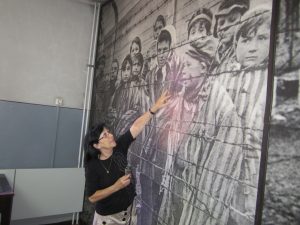
Though many specific moments will stay with me forever from my experience, this photo captures the paramount scene in my real life journey through Auschwitz. In this photo, my hero Marta points to two girls among a group of twelve young boys and girls. This photo was captured moments after Auschwitz was liberated on January 27, 1945. The library of photos that remains from the Holocaust, and Auschwitz specifically, is so limited as the Germans attempted to destroy as much evidence as possible in a preemptive move prior to losing the war. For this reason, less than 100 photos are displayed at Auschwitz, as that's all that could be compiled in the after math. The two girls Marta points at are Marta and her sister. The privilege of experiencing Auschwitz with this hero was unimaginable, and moved me beyond words.
Throughout my simulation, I incorporated audio triggers that are positioned to correlate with the chapters of the story yet another heroic Auschwitz survivor shares. His story is powerful, and my design in placing the triggers, directly referenced in each of his narrative monologues, results in the same effect of presence as I had experienced with Marta.
These audio triggers presented plenty of irritation. Unity presented no rhyme or reason as to when it chose to allow my audio to play, to play at an audible level, to play only when being triggered rather than automatically, etc. My frustrations lay in the fact that my logic remained the same, Unity just seemed to respond differently at various times to my logic. At points, I considered leaving out audio that was presenting itself as particularly troublesome. However, I realized every piece of the survivor's story was pertinent to my story, and went through various forms of troubleshooting. I re-imported audio using Audacity to get it into a wav format. I heightened audio levels in outside programs to ensure it was clear and audible. I many times deleted the audio clips and triggers altogether, and drew out the logic again to improve performance. There was no one-step solution, but rather repeated attempts of tricking Unity into accepting my logic and playing my audio solely when triggered. I finally realized, Unity was being overwhelmed with too many changes, and too much programming all at once. I began to make one small change, save the change, exit the program, and return to it hours or even days later. Unity responded well to this strategy.
The project in itself is simple: incorporating one triggered animation, many triggered audio clips, and a terrain design that served itself as extremely time-intensive (upwards of 10 hours for this alone). Railroad tracks were tediously built and placed. This project in no way breezed by, both in ease of constructing or time involved in building, but the end result is so worth it. I've learned so much through the process, and created an end result I am thoroughly proud of and can hopefully utilize in the future.
I thank the WWII Foundation for giving me permission to use audio from their video, Holocaust survivor Israel Arbeiter returns to Auschwitz-Birkenau with the WWII Foundation. Tim Gray, chairman of the foundation, gave me full permission to utilize Israel Arbeiter's spoken audio from his video for classroom use.
Below, please find the link to my blog post pertaining to my independent learning requirement. I read Slay the Dragon, and took away great insights as to how to effectively tell story within this format.

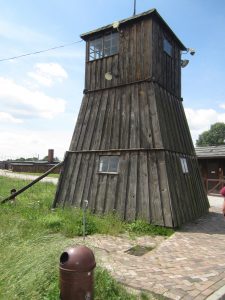
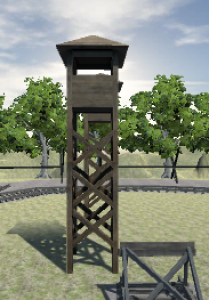
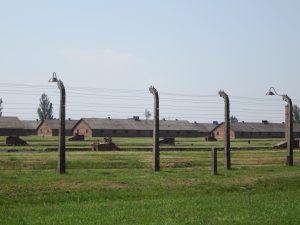
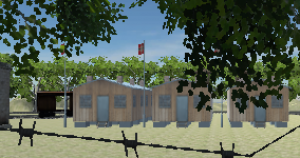
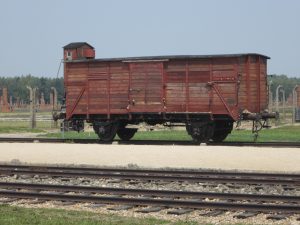
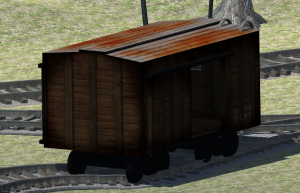
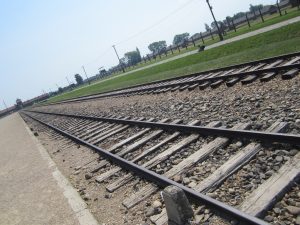
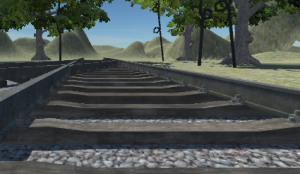
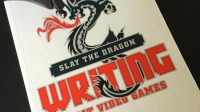
COMMENTS